Which pipes are better to choose for heating: a comparative review
The question of which pipes are better for heating pops up during the construction or overhaul of private residential real estate. The owners of houses and apartments ask his consultants in construction stores, installation engineers and repair crews, but do not receive a definite answer.
This is an objective reality, because modern heating systems are significantly different from each other and require individual choice. We will introduce you to all types of pipes currently used in pipeline construction. Based on our recommendations, you can choose the best option.
The content of the article:
Main pipe selection criteria
In order to intelligently and correctly choose pipes for a home heating system, the following items should be considered:
- type of installation of the pipeline complex - surface or hidden (internal);
- estimated pressure power - an assessment of the range from basic to the maximum possible indicators;
- type of heating system - autonomous or central communications with gravity or forced circulation of the heating composition;
- the maximum temperature for which the coolant is designed;
- configuration features of heating equipment - one-pipe or two-pipe complex.
Only knowing all these factors, they begin to choose the type of material that will most effectively manifest itself under the specified conditions.
Varieties for heating systems
Modern heating systems use pipe rolling and parts made of materials such as metal or plastic. The first category includes ordinary steel, alloy steel and copper pipes. The second includes polypropylene, metal-plastic and polyethylene cross-linked communication elements.
All of them have certain positive qualities and are effective in different situations. The choice of a specific type of pipe occurs individually, depending on the expected operating conditions and other important parameters.
Steel Pipe Features
More recently, steel pipes were used in the vast majority of heating systems and were non-alternative material. Today, their positions have been significantly shaken, and serious competitors have appeared nearby.
However, it was not possible to completely displace steel pipes from the market. Until now, they have been successfully used, but mainly in autonomous gravity complexes where large-diameter communications are required.

Among the main advantages of steel pipes, a high tendency to thermal conductivity, a small linear expansion with active heating, and resistance to intense pressure are noted.
Justified advantages are considered unprecedented strength, both on straight and on rounded segments, the ability to withstand aggressive temperature conditions and the affordable cost of the elements.

Among the shortcomings indicate a problematic and time-consuming installation, which is impossible without the availability of specialized expensive equipment that can only be used by professionally trained craftsmen with extensive experience in conducting such events.
The process of arranging the heating complex and the impressive dimensions of the pipes make it difficult. You won’t be able to do it all by yourself; it’s better to attract someone from your friends or relatives with the skills of welders and installers. The brigade is easier and faster to work, you can organize everything clearly and accurately, providing the system with the necessary tightness.

For the organization of hidden heating systems, steel pipes and used for their connection steel fittings categorically not suitable. The metal has a low anticorrosion threshold and, in humid conditions, quickly rusts, rots, and leaks.
To eliminate the problem, a complete dismantling of the decorative coating is required if the pipe passes indoors, or large-scale excavation works when the problem arises when approaching the house.
What is the difference between alloy steel?
Alloy steel is a durable material that, in addition to traditional impurities, has various additives that improve the physical properties of the metal.
An example of an alloyed material is stainless steel - this is a special steel alloy containing at least 12% chromium in the composition. This additive provides resistance to corrosion and easy handling with special tools.
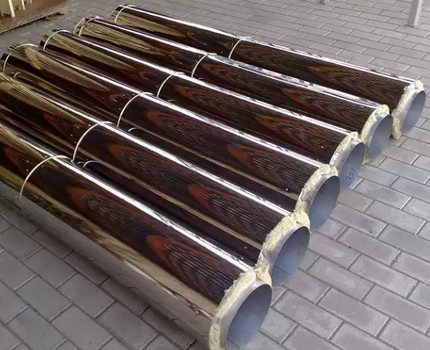
For the production of pipes with a weld, cold or hot-rolled steel sheets with a working thickness of 0.4-5 mm and 2-50 mm, respectively, are used.
Finished products have less weight than conventional steel, have good resistance to structural damage and mechanical damage. Due to the small coefficient of thermal expansion, serious temperature loads can easily withstand during operation. They function perfectly at pressures up to 16 bar.
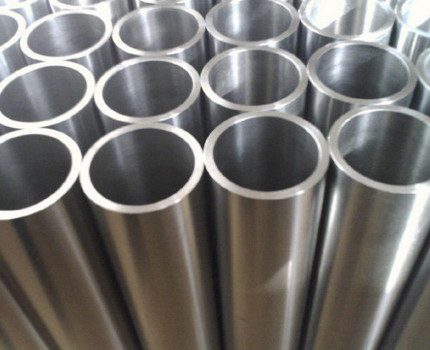
Another indisputable advantage of alloyed stainless pipes is the ability to transport not only coolant heated to high temperatures, but even heated steam.
Varieties of stainless steel pipes
Alloy stainless steel pipes are made in two ways: welded and seamless. In the first embodiment, the sheets of metal by means of electric welding are connected to each other, receiving a longitudinal or spiral seam. To prevent near-weld corrosion, the joint area is subjected to special processing and grinding.
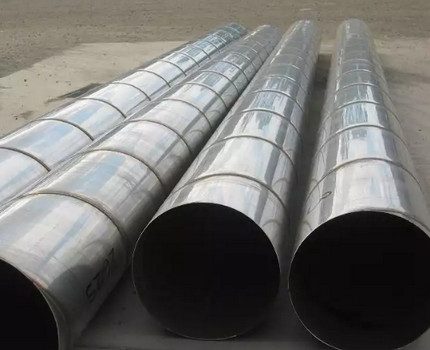
Seamless products are made by cold or hot deformation of solid tube blanks of stainless alloy steel. Cold-walled produce thin-walled pipes, and hot - thick-walled pipes. The finished product has a perfectly smooth surface and is characterized by unprecedented reliability.
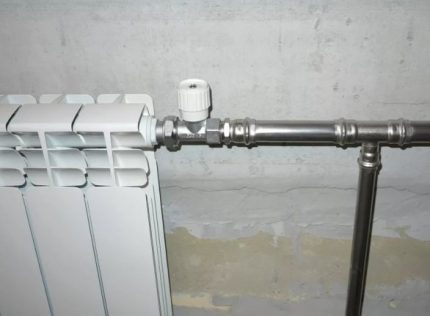
Pipes made using seamless technology are not afraid of corrosion, function well in harsh and aggressive operating conditions and quietly withstand record temperatures and tremendous pressure.
Copper pipes for heating
In the manufacture of pipes for heating systems, high-quality copper is used, in rare cases, a copper-zinc alloy, where the volume of the zinc component does not exceed 5%. To reduce the level of heat loss and make the products more attractive, the outer surface is covered with a polyethylene or polyvinyl chloride layer.
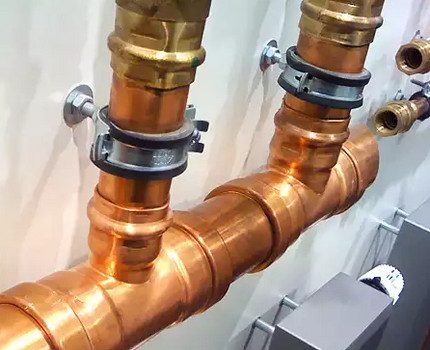
Among the main advantages material for copper pipelines First of all, they are noted for their unsurpassed strength, due to which the products during intensive use last for 100 years and are not exposed to corrosion.
Their thermal conductivity is 389.6 W / mK, which significantly exceeds the actual operating indicators of cast iron, steel and metal plastic.
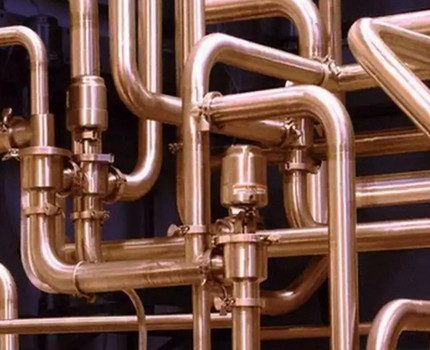
The operating temperature range of copper pipes is very wide. They perform well both at high (up to + 250 ° С) and at low (up to -100 ° С) temperature conditions, they do not melt during intense heating, they do not crack and do not deform during operation.

The thermal expansion of copper pipes is simply minimal. With regular exposure to metal coolant with a temperature of more than 90 ° C, each running meter of communications is lengthened by about 0.1%. All other materials here are significantly inferior to copper.
Due to their ability to maintain an aesthetic, attractive appearance over time, they are suitable for pipeline laying not only internal, but also external heating systems and can serve not only for its intended purpose, but also carry the function of a decorative interior element.
Of the minuses, professionals note incompatibility with other metals.In order to reduce the cost, they do not recommend connecting parts made of cast iron or stainless steel for copper pipes. Such “savings” will later come sideways to the owner, since the chemical reaction between the elements will ultimately provoke corrosion of the entire heating system.
In the assembly of pipelines made of copper, only copper fittings. With their help, the connection is made by crimping, high-temperature and low-temperature soldering.
Among the shortcomings of copper pipes most often mention their high cost in comparison with other types of materials
Distinctive features of polypropylene products
Polypropylene is a rigid non-toxic synthetic polymer with high physical and mechanical characteristics. Pipes made from this modern material exhibit exceptional impact resistance and multiple bending ability, low gas and vapor permeability, wear resistance and full dielectricity.
Advantages of PP Material
Due to these qualities, PP pipe material is actively used for arranging heating systems both on a production scale and in the private sector.
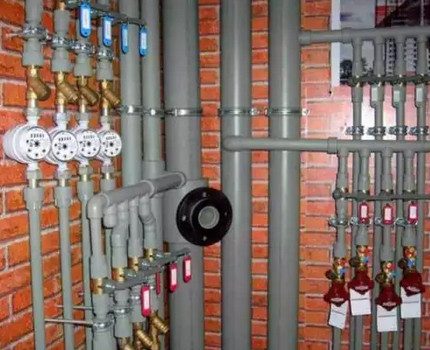
Pipes made of polypropylene are included in the category of low-cost communication parts and have a small weight, which makes it easy to transport and assemble them alone.
Among other advantages, such positions as:
- ideally smooth inner surface, not conducive to the accumulation of calcareous deposits, significantly complicating the free circulation of the coolant;
- quick and affordable installation that does not require the use of professional expensive equipment (all work can be done with a soldering iron, which is so easy to operate that it easily submits even to a person very distant from such work);
- long service life without loss of efficiency (on average about 25 years at full load);
- good resistance to freezing temperatures;
- neat, aesthetic appearance that does not deteriorate over time.
By cons polypropylene pipes include weak plastic stiffness, which in the future can provoke a sagging heat line and, as a result, lead to a crack in the joint or break.
To fix the problem, just patch the fragment will not work. For subsequent correct operation and restoration of the integrity of the heating complex, it will be necessary to replace the pipe section located between the two fittings.
The connection of parts of a polypropylene pipeline is made by welding, the specifics of the production of which is set forth in our recommended article.
With features of choice welding machine for the construction of a pipeline made of polypropylene and recommended operating temperature limits to perform soldering, you can also familiarize yourself on our website.
Types of polypropylene pipes for heating
In order for the home heating system to work longer and to demonstrate the highest possible efficiency indicators throughout the entire operational period, reinforced polypropylene pipes are used. They are classified by type of reinforcing material.
Applied in the heating device PP pipes reinforced with aluminum foil along the outer layer, in the middle or along the inner edge. The sheets of metal in this case may be discontinuous, continuous and corrugated.
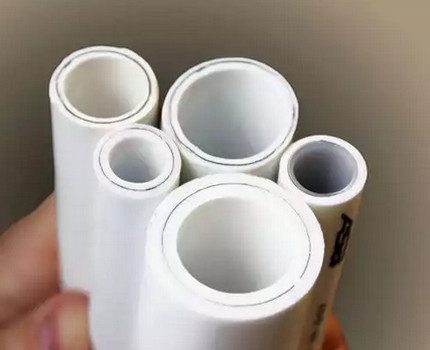
The foil reduces the actual thermal expansion of the material and creates a diffusion barrier, preventing oxygen from penetrating through the walls. As a result, a precipitate of calcium is not formed and does not provoke oxidative processes on the walls of radiators and the boiler.
Glass fiber is also an effective reinforcing material for pipes. By coextrusion, it is placed in the middle layer of a polypropylene pipe. Due to the fact that both materials are similar in composition and basic properties, during welding with fitting fastening an alloy of high strength is formed, not subject to delamination even during long-term operation.
Polypropylene pipes with fiberglass reinforcement are simple and convenient to install, unlike aluminum pipes, they do not require additional cleaning of the edges before soldering, they demonstrate excellent soundproofing properties.
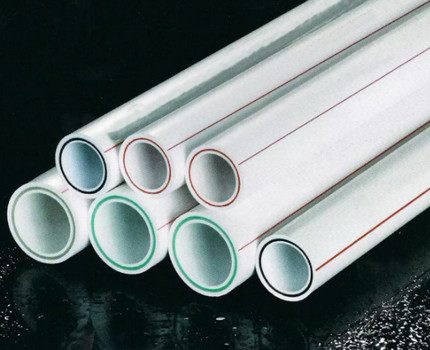
Another modern reinforcing element is composite. It is a mixture of polypropylene and fiberglass. Added to the pipe, increases the adhesive properties of the reinforcing layer and enhances performance characteristics such as strength and resistance to mechanical damage.
Rules for assembling pipelines for heating systems from polypropylene pipes are given in the next article, the contents of which we advise you to read.
XLPE pipes
Cross-linked polyethylene is a progressive material made using modern technology. It is an ethylene polymer with molecules cross-linked by chemical or physical crosslinking. It features a uniform structure, flexibility and a high level of tensile strength.
The list of the main advantages of cross-linked polyethylene pipes includes:
- excellent shrink properties;
- the ability to clearly keep the shape along the stitching line even when heated to 200 ° C;
- excellent wear resistance during intensive operation;
- lack of halogens and heavy metals;
- immunity to corrosive manifestations and high pressure;
- weak vulnerability to chemically active aggressive substances;
- normal toughness at low temperature indicators (up to - 50 ° C);
- minimum percentage of expansion due to heat;
- suitable for flush mounting;
- minimal need for preventative maintenance.
Due to its plasticity, the material is easy to process and does not require special tools, special professional abilities or serious experience. Even an amateur with a step-by-step instruction on describing the necessary work will cope with the arrangement of the heating system.
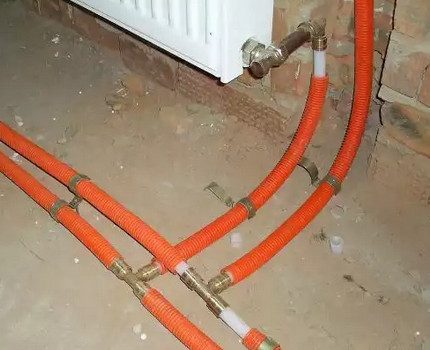
The most significant drawback of cross-linked polyethylene is its high vulnerability to ultraviolet radiation and the objective technological impossibility of manufacturing large-diameter pipe material.
Methods and technology for welding polyethylene pipes are described in articlecompletely devoted to this interesting question.
Metalloplastik for the construction of pipelines
Metal-plastic products are the most common and practical material for arranging home heating systems. They harmoniously combine the advantages of plastic and metal, only minimizing the drawbacks of both materials.

Plastic pipes have a complex structure and a multilevel structure. The outer plastic layer acts as a fuse and protects the product from aggressive environmental influences. Next are aluminum foil and polymer of increased smoothness, which do not allow sediment and deposits to accumulate inside.
The connection of metal-plastic pipes is carried out using specialized fittingsdesigned for crimping and clamping. In the first case, theoretically detachable connections are created, which are still not recommended without special need to disassemble. In the second - one-piece.
To form connections with press fittings no expensive tool required. Introduces his choice articlerecommended by us for reading. Assembly of the system will be able to produce a completely inexperienced performer.
Of the hallmarks plastic pipes the most important are:
- minimum linear expansion under the influence of the coolant, not leading to deformation and sagging of the pipeline system or its individual fragments;
- pronounced smoothness of the inner surface, due to which the passage does not clog and the coolant circulates in the normal mode;
good temperature resistance (lower than metal parts, but higher than other plastic products); - bending and tearing strength, ductility at acceptable radii (if the threshold is exceeded, a “crease” is possible);
- light weight, greatly facilitating the installation process;
- corrosion resistance;
- the possibility of processing without the use of special equipment.
The cons include the not-too-long service life of tubular products (up to 15 years at the request of the manufacturers) and the significant cost of connecting fittings.
Conclusions and useful video on the topic
In the videos, information on how to choose the best option for pipes for a home heating system.
A detailed review, useful tips and curious nuances of using copper, metal-plastic, polypropylene and cross-linked polyethylene pipe parts for home heating.
Options for arranging a modern heating system in a residential building. Pros and cons of various methods of mounting metal equipment and other popular materials.
Tips for choosing pipes and fittings for a radiator heating system. What material is better to stop on, so that the equipment gives the maximum return with a reasonable consumption of energy.
Even the most experienced professional will not be able to give a definite answer to the question of which pipes are preferable to choose for arranging heating in a private house or apartment. Each case will have to be considered separately, taking into account the particular design of a particular heating system and the financial capabilities of property owners.
Do not make a choice based on price alone. It is better to focus on the option that combines optimal quality and reasonable cost, otherwise you may end up in the position of a stingy person who paid twice for the work done. Moreover, the process of installing heating equipment takes time and causes some inconvenience to the owners of the home.
And what kind of pipes did you buy for a heating circuit in a country house? What was the deciding factor for making this particular purchase? Please write comments in the block below, post a photo on the topic of the article, ask questions.

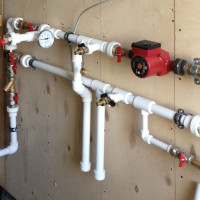 Pipes for heating boilers: which pipes are better for tying the boiler + installation tips
Pipes for heating boilers: which pipes are better for tying the boiler + installation tips 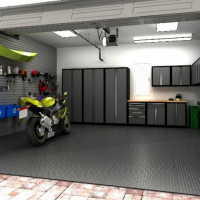 How to better organize garage heating: a comparative overview of the best ways
How to better organize garage heating: a comparative overview of the best ways 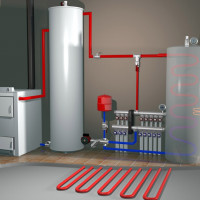 Types of heating systems for a private house: a comparative overview + the pros and cons of each type
Types of heating systems for a private house: a comparative overview + the pros and cons of each type 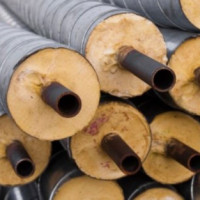 Insulation for heating pipes: overview of types + application examples
Insulation for heating pipes: overview of types + application examples  How to hide heating pipes: we disassemble the types of boxes and decorative linings
How to hide heating pipes: we disassemble the types of boxes and decorative linings 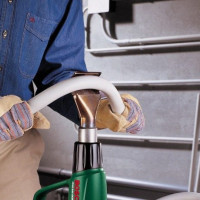 Polypropylene pipes for heating: types, selection criteria, marking
Polypropylene pipes for heating: types, selection criteria, marking  How much does it cost to connect gas to a private house: the price of organizing gas supply
How much does it cost to connect gas to a private house: the price of organizing gas supply  The best washing machines with dryer: model rating and customer tips
The best washing machines with dryer: model rating and customer tips  What is the color temperature of light and the nuances of choosing the temperature of the lamps to suit your needs
What is the color temperature of light and the nuances of choosing the temperature of the lamps to suit your needs  Replacement of a geyser in an apartment: replacement paperwork + basic norms and requirements
Replacement of a geyser in an apartment: replacement paperwork + basic norms and requirements
I exchanged old steel pipes for polypropylene at home. I stopped at this view for three reasons - I wanted to do everything myself, the cheapness of the material and reliability, the more I turned up the soldering iron for the action for these pipes, absolutely for a penny. Soldering everything is simple and easy, but, as the bearded man in the video correctly noted, for the time being. It is extremely difficult to connect some parts already in place. Therefore, you need to draw a diagram in advance and clearly imagine at what points individual large sections will be soldered.
It seems to me that polypropylene is best. It is cheap and reliable, it is very simple to work with it: the pipe can be cut anywhere, made notches and fastened with a union nut. Repair also does not require large investments: a piece of pipe is replaced by another and that’s all. Compared to steel and copper, it costs a penny, and labor costs are minimal. No wonder this is the most modern material - people strive for the best.
Alexey, the whole question is strength. If this is a private house, and everything is in your hands, then yes. And the central heating, with its pressure surges and water hammer ... I, for one, did not dare.
For polypropylene pipes, quality installation is very important. The slightest mistake threatens subsequent problems. In general, in my opinion, the best solution is metal-plastic with press joints. More expensive, but more reliable.
I have metal-plastic heating at home, he’s already a dozen years old. Today, he started a complete replacement of the pipe - here and there, leaks, and not a single one can be repaired. No, there is no more metal plastic, only reinforced polypropylene!